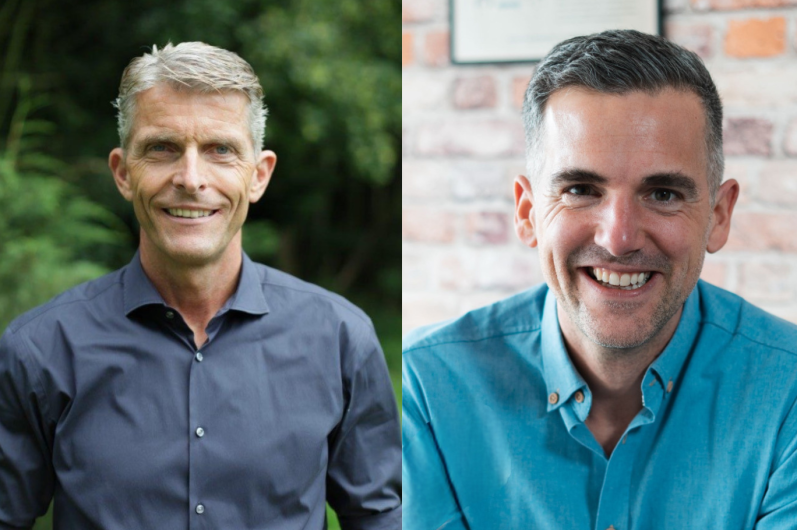Page content
NEWS-Blog

Maximising returning customers with digital marketing
A best practice example by the agency morefire and tour operator Viamonda
May 23, 2023
An interview with Michael Tenzer, managing director of the tour operator Viamonda, and Robin Heintze, managing director of the Cologne-based digital agency morefire: together they have established a remarkable digital marketing strategy for maximising returning customers.
Before a customer returns I must win them over in the first place. What must I do to achieve that? I assume that in most cases initial contact is made via Google. Is that correct?
Michael Tenzer: Exactly, the first step is to win over a customer. In our case content is crucial. What that means is that many users discover our articles containing information on a destination or trip they are planning. We try to give our readers as much information as possible. It is all very fluid. Creating and updating content is a lot of work, but it is also a lot of fun writing about countries and their inhabitants.
We also collaborate with morefire in order to attract attention via Google Ads.
Which strategy is better, marketing by destination or interest?
Robin Heintze: At the moment campaigns focusing on interests are more successful. Some audiences appear to focus less on the destination and more on the activity and nature of the trip. That makes sense to me. If a single person is looking for a trip with others who have similar interests, then enjoying that in a small group makes it special. Often, all the destination does is simply add to the experience.
How do I stay focused in order not to lose a potential customer?
Robin Heintze: Website content is something the Viamonda team is quite good at. Where else can I find all the information I need for a trip? Normally, collecting all the information requires a lot of time and effort Viamonda provides readers with all this directly and that builds trust from the outset.
Michael Tenzer: In addition to systematically nurturing customers via Hubspot, it should be mentioned that retargeting is supported too. We spend about 15 per cent of our performance budget on retargeting. That usually works quite well as people already know us and have already shown initial interest.
When is the moment to request a customer’s data and how can I prompt its release?
Michael Tenzer: We see our website as an integrated CRM website which offers about a dozen ways to leave an email. For example, visitors can request an offer. Contact forms are available on every page in the header, and other ways of getting in touch can be found in the top right-hand corner of the contact form. We have also installed pop-ups offering help on the individual travel pages. There are also numerous other ways to contact us by email.
Other increasingly important ways of securing contact are lead magnets such as travel checklists or a “friends recommend friends“ promotion which we advertise on our website.
How do I know how well a lead works?
Michael Tenzer: That is quite easy to see on a lead scoreboard which we set up ourselves and constantly monitor. Any lead activity on the website or newsletter is recorded, weighted and analysed using a standard routine. This lets us precisely determine how effective leads are over a certain period of time. These are then grouped and systematically processed in a newsletter personally addressed to contacts.
I want to finally get a customer to make a deal. What is your advice?
Michael Tenzer: A personal chat. There is no substitute when talking about something so emotively charged as a personal trip. It also builds trust. On top of that, good website content is always a bonus.
Happy customers are loyal. What is your loyalty rate?
Michael Tenzer: Let me put it this way: year-on-year it has risen by 80 per cent. After the previous years of the pandemic that is currently our benchmark.
That sounds better than average. What is your secret?
Michael Tenzer: I think we are able to create helpful content. With morefire, we have also created an email sequence that supports visitors all the way to becoming a customer and, importantly, beyond that. We try to give visitors all the information they need every step of the customer journey or when they are planning their trip, be it about visas or local excursions, in order to get them even more excited about going. After the trip we enquire about photos and when a certain period has elapsed make tailored offers. We do good work in that respect. It seems our customers take note of that and reward us with their loyalty.
Is it the future or is it happening now? How is ChatGPT changing the process you describe?
Robin Heintze: In our day-to-day agency work ChatGPT helps to create advertising, vary texts, and it inspires the creative process. A tip for anyone working with AI: take your time over prompts, as they are the basis for a response.
Michael Tenzer: Yes, I agree. This tool can offer inspiration and as it stands also supply a good text as the basis for an article. It then requires staff to add a personal touch and supplement it here and there with facts and keywords. Creating our kind of detailed content cannot yet be automated or taken over by AI.

.svg)
